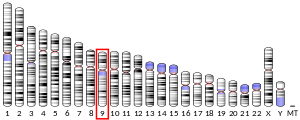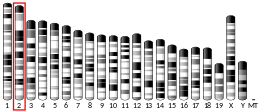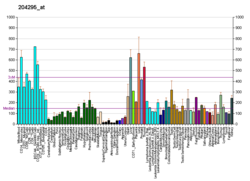| SURF1 | |||||||||||||||||||||||||||||||||||||||||||||||||||
|---|---|---|---|---|---|---|---|---|---|---|---|---|---|---|---|---|---|---|---|---|---|---|---|---|---|---|---|---|---|---|---|---|---|---|---|---|---|---|---|---|---|---|---|---|---|---|---|---|---|---|---|
| Identifiers | |||||||||||||||||||||||||||||||||||||||||||||||||||
| Aliases | SURF1, CMT4K, surfeit 1, cytochrome c oxidase assembly factor, SURF1 cytochrome c oxidase assembly factor, MC4DN1, SHY1 | ||||||||||||||||||||||||||||||||||||||||||||||||||
| External IDs | OMIM: 185620; MGI: 98443; HomoloGene: 2387; GeneCards: SURF1; OMA:SURF1 - orthologs | ||||||||||||||||||||||||||||||||||||||||||||||||||
| |||||||||||||||||||||||||||||||||||||||||||||||||||
| |||||||||||||||||||||||||||||||||||||||||||||||||||
| |||||||||||||||||||||||||||||||||||||||||||||||||||
| |||||||||||||||||||||||||||||||||||||||||||||||||||
| |||||||||||||||||||||||||||||||||||||||||||||||||||
| Wikidata | |||||||||||||||||||||||||||||||||||||||||||||||||||
| |||||||||||||||||||||||||||||||||||||||||||||||||||
Surfeit locus protein 1 (SURF1) is a protein that in humans is encoded by the SURF1 gene.[5][6] The protein encoded by SURF1 is a component of the mitochondrial translation regulation assembly intermediate of cytochrome c oxidase complex (MITRAC complex), which is involved in the regulation of cytochrome c oxidase assembly.[7][8] Defects in this gene are a cause of Leigh syndrome, a severe neurological disorder that is commonly associated with systemic cytochrome c oxidase (complex IV) deficiency, and Charcot-Marie-Tooth disease 4K (CMT4K).[9][10]
Structure
[edit]SURF1 is located on the q arm of chromosome 9 in position 34.2 and has 9 exons.[9] The SURF1 gene produces a 33.3 kDa protein composed of 300 amino acids.[11][12] The protein is a member of the SURF1 family, which includes the related yeast protein SHY1 and rickettsial protein RP733. The gene is located in the surfeit gene cluster, a group of very tightly linked genes that do not share sequence similarity, where it shares a bidirectional promoter with SURF2 on the opposite strand.[9] SURF1 is a multi-pass protein that contains two transmembrane regions, one 19 amino acids in length from positions 61-79 and the other 17 amino acids in length from positions 274–290.[7][8]
Function
[edit]This gene encodes a protein localized to the inner mitochondrial membrane and thought to be involved in the biogenesis of the cytochrome c oxidase complex.[9] SURF1 is a multi-pass membrane protein component of the mitochondrial translation regulation assembly intermediate of cytochrome c oxidase complex (MITRAC complex). The MITRAC complex regulates cytochrome c oxidase assembly by acting as a central assembly intermediate, receiving subunits imported to the inner mitochondrial membrane and regulating COX1 mRNA translation.[7][8][13]
Clinical significance
[edit]Mutations in SURF1 have been associated with mitochondrial complex IV (cytochrome c oxidase) deficiency with clinical manifestations of Leigh syndrome and Charcot-Marie-Tooth disease 4K (CMT4K).[7][8][14]
Mitochondrial complex IV deficiency
[edit]Mitochondrial complex IV deficiency is a disorder of the mitochondrial respiratory chain with heterogeneous clinical manifestations, ranging from isolated myopathy to severe multisystem disease affecting several tissues and organs. Features include hypertrophic cardiomyopathy, hepatomegaly and liver dysfunction, hypotonia, muscle weakness, exercise intolerance, developmental delay, delayed motor development and mental retardation. Some affected individuals manifest a fatal hypertrophic cardiomyopathy resulting in neonatal death. A subset of patients manifest Leigh syndrome. In patients presenting with pathogenic mutations resulting in dysfunctioning SURF1, cytochrome c oxidase activity is likely to be diminished in one or more types of tissues.[15][7][8]
Leigh syndrome
[edit]Leigh syndrome is an early-onset progressive neurodegenerative disorder characterized by the presence of focal, bilateral lesions in one or more areas of the central nervous system including the brainstem, thalamus, basal ganglia, cerebellum and spinal cord. Clinical features depend on which areas of the central nervous system are involved and include subacute onset of psychomotor retardation, hypotonia, ataxia, weakness, vision loss, eye movement abnormalities, seizures, and dysphagia. There have been over 30 different mutations in SURF1 that have been associated with Leigh syndrome. These mutations, which comprise at least 10 missense or nonsense, 8 splice site, and 12 insertion or deletion mutations, are believed to be the result of dysfunctional SURF1 that results in Leigh syndrome and cytochrome c oxidase deficiency. The most common mutation is believed to be 312_321del 311_312insAT.[14][7][8]
Charcot-Marie-Tooth disease 4K (CMT4K)
[edit]Charcot-Marie-Tooth disease 4K (CMT4K) is an autosomal recessive, demyelinating form of Charcot-Marie-Tooth disease, a disorder of the peripheral nervous system, characterized by progressive weakness and atrophy, initially of the peroneal muscles and later of the distal muscles of the arms. Charcot-Marie-Tooth disease is classified in two main groups on the basis of electrophysiologic properties and histopathology: primary peripheral demyelinating neuropathies (designated CMT1 when they are dominantly inherited) and primary peripheral axonal neuropathies (CMT2). Demyelinating neuropathies are characterized by severely reduced nerve conduction velocities (less than 38 m/sec), segmental demyelination and remyelination with onion bulb formations on nerve biopsy, slowly progressive distal muscle atrophy and weakness, absent deep tendon reflexes, and hollow feet. By convention, autosomal recessive forms of demyelinating Charcot-Marie-Tooth disease are designated CMT4. CMT4K patients manifest upper and lower limbs involvement. Some affected individuals have nystagmus, polyneuropathy, putaminal and periaqueductal lesions, and late-onset cerebellar ataxia. This disease, when associated with mutations in SURF1, has been found to be linked to cytochrome c oxidase deficiency. Variants associated with this CMT4K have included a homozygous splice site mutation, c.107-2A>G, a missense mutation, c.574C>T, and a deletion, c.799_800del.[10][7][8]
Interactions
[edit]SURF1 has been shown to have 11 binary protein-protein interactions including 8 co-complex interactions. SURF1 interacts with COA3 as part of the mitochondrial translation regulation assembly intermediate of cytochrome c oxidase complex (MITRAC complex). PTGES3, SLC25A5, COX6C, COX14, COA1 have all also been found to interact with SURF1.[7][8][16]
References
[edit]- ^ a b c ENSG00000280627 GRCh38: Ensembl release 89: ENSG00000148290, ENSG00000280627 – Ensembl, May 2017
- ^ a b c GRCm38: Ensembl release 89: ENSMUSG00000015790 – Ensembl, May 2017
- ^ "Human PubMed Reference:". National Center for Biotechnology Information, U.S. National Library of Medicine.
- ^ "Mouse PubMed Reference:". National Center for Biotechnology Information, U.S. National Library of Medicine.
- ^ Yon J, Jones T, Garson K, Sheer D, Fried M (March 1993). "The organization and conservation of the human Surfeit gene cluster and its localization telomeric to the c-abl and can proto-oncogenes at chromosome band 9q34.1". Human Molecular Genetics. 2 (3): 237–40. doi:10.1093/hmg/2.3.237. PMID 8499913.
- ^ Zhu Z, Yao J, Johns T, Fu K, De Bie I, Macmillan C, Cuthbert AP, Newbold RF, Wang J, Chevrette M, Brown GK, Brown RM, Shoubridge EA (December 1998). "SURF1, encoding a factor involved in the biogenesis of cytochrome c oxidase, is mutated in Leigh syndrome". Nature Genetics. 20 (4): 337–43. doi:10.1038/3804. PMID 9843204. S2CID 12584110.
- ^ a b c d e f g h "SURF1 - Surfeit locus protein 1 - Homo sapiens (Human) - SURF1 gene & protein". www.uniprot.org. Retrieved 2018-08-07.
 This article incorporates text available under the CC BY 4.0 license.
This article incorporates text available under the CC BY 4.0 license.
- ^ a b c d e f g h "UniProt: the universal protein knowledgebase". Nucleic Acids Research. 45 (D1): D158 – D169. January 2017. doi:10.1093/nar/gkw1099. PMC 5210571. PMID 27899622.
- ^ a b c d "Entrez Gene: SURF1 surfeit 1".
 This article incorporates text from this source, which is in the public domain.
This article incorporates text from this source, which is in the public domain.
- ^ a b Echaniz-Laguna A, Ghezzi D, Chassagne M, Mayençon M, Padet S, Melchionda L, Rouvet I, Lannes B, Bozon D, Latour P, Zeviani M, Mousson de Camaret B (October 2013). "SURF1 deficiency causes demyelinating Charcot-Marie-Tooth disease". Neurology. 81 (17): 1523–30. doi:10.1212/WNL.0b013e3182a4a518. PMC 3888171. PMID 24027061.
- ^ Yao D. "Cardiac Organellar Protein Atlas Knowledgebase (COPaKB) —— Protein Information". amino.heartproteome.org. Archived from the original on 2018-08-08. Retrieved 2018-08-07.
- ^ Zong NC, Li H, Li H, Lam MP, Jimenez RC, Kim CS, Deng N, Kim AK, Choi JH, Zelaya I, Liem D, Meyer D, Odeberg J, Fang C, Lu HJ, Xu T, Weiss J, Duan H, Uhlen M, Yates JR, Apweiler R, Ge J, Hermjakob H, Ping P (October 2013). "Integration of cardiac proteome biology and medicine by a specialized knowledgebase". Circulation Research. 113 (9): 1043–53. doi:10.1161/CIRCRESAHA.113.301151. PMC 4076475. PMID 23965338.
- ^ Dennerlein S, Oeljeklaus S, Jans D, Hellwig C, Bareth B, Jakobs S, Deckers M, Warscheid B, Rehling P (September 2015). "MITRAC7 Acts as a COX1-Specific Chaperone and Reveals a Checkpoint during Cytochrome c Oxidase Assembly". Cell Reports. 12 (10): 1644–55. doi:10.1016/j.celrep.2015.08.009. hdl:11858/00-001M-0000-0028-466E-C. PMID 26321642.
- ^ a b Péquignot MO, Dey R, Zeviani M, Tiranti V, Godinot C, Poyau A, Sue C, Di Mauro S, Abitbol M, Marsac C (May 2001). "Mutations in the SURF1 gene associated with Leigh syndrome and cytochrome C oxidase deficiency". Human Mutation. 17 (5): 374–81. doi:10.1002/humu.1112. PMID 11317352. S2CID 26557551.
- ^ "Mitochondrial complex IV deficiency". www.uniprot.org. Retrieved 2018-08-07.
- ^ IntAct. "IntAct Portal". www.ebi.ac.uk. Retrieved 2018-08-07.
Further reading
[edit]- Shoubridge EA (2001). "Cytochrome c oxidase deficiency". American Journal of Medical Genetics. 106 (1): 46–52. doi:10.1002/ajmg.1378. PMID 11579424.
- Lennard A, Gaston K, Fried M (November 1994). "The Surf-1 and Surf-2 genes and their essential bidirectional promoter elements are conserved between mouse and human". DNA and Cell Biology. 13 (11): 1117–26. doi:10.1089/dna.1994.13.1117. PMID 7702754.
- Duhig T, Ruhrberg C, Mor O, Fried M (August 1998). "The human Surfeit locus". Genomics. 52 (1): 72–8. doi:10.1006/geno.1998.5372. PMID 9740673.
- Yao J, Shoubridge EA (December 1999). "Expression and functional analysis of SURF1 in Leigh syndrome patients with cytochrome c oxidase deficiency". Human Molecular Genetics. 8 (13): 2541–9. doi:10.1093/hmg/8.13.2541. PMID 10556303.
- Teraoka M, Yokoyama Y, Ninomiya S, Inoue C, Yamashita S, Seino Y (December 1999). "Two novel mutations of SURF1 in Leigh syndrome with cytochrome c oxidase deficiency". Human Genetics. 105 (6): 560–3. doi:10.1007/s004390051145. PMID 10647889.
- Poyau A, Buchet K, Bouzidi MF, Zabot MT, Echenne B, Yao J, Shoubridge EA, Godinot C (February 2000). "Missense mutations in SURF1 associated with deficient cytochrome c oxidase assembly in Leigh syndrome patients". Human Genetics. 106 (2): 194–205. doi:10.1007/s004390051028 (inactive 1 November 2024). PMID 10746561.
{{cite journal}}: CS1 maint: DOI inactive as of November 2024 (link) - Ogawa Y, Naito E, Ito M, Yokota I, Saijo T, Shinahara K, Kuroda Y (March 2002). "Three novel SURF-1 mutations in Japanese patients with Leigh syndrome". Pediatric Neurology. 26 (3): 196–200. doi:10.1016/S0887-8994(01)00382-4. PMID 11955926.
- Capková M, Hansíková H, Godinot C, Houst'ková H, Houstĕk J, Zeman J (October 2002). "[A new missense mutation of 574C>T in the SURF1 gene--biochemical and molecular genetic study in seven children with Leigh syndrome]". Casopis Lekaru Ceskych. 141 (20): 636–41. PMID 12515039.
- Sacconi S, Salviati L, Sue CM, Shanske S, Davidson MM, Bonilla E, Naini AB, De Vivo DC, DiMauro S (February 2003). "Mutation screening in patients with isolated cytochrome c oxidase deficiency". Pediatric Research. 53 (2): 224–30. doi:10.1203/01.PDR.0000048100.91730.6A. hdl:11577/1368344. PMID 12538779. S2CID 12496207.
- Rossi A, Biancheri R, Bruno C, Di Rocco M, Calvi A, Pessagno A, Tortori-Donati P (2003). "Leigh Syndrome with COX deficiency and SURF1 gene mutations: MR imaging findings". AJNR. American Journal of Neuroradiology. 24 (6): 1188–91. PMC 8148997. PMID 12812953.
- Moslemi AR, Tulinius M, Darin N, Aman P, Holme E, Oldfors A (October 2003). "SURF1 gene mutations in three cases with Leigh syndrome and cytochrome c oxidase deficiency". Neurology. 61 (7): 991–3. doi:10.1212/01.wnl.0000082391.98672.0a. PMID 14557577. S2CID 31028913.
- Williams SL, Valnot I, Rustin P, Taanman JW (February 2004). "Cytochrome c oxidase subassemblies in fibroblast cultures from patients carrying mutations in COX10, SCO1, or SURF1". The Journal of Biological Chemistry. 279 (9): 7462–9. doi:10.1074/jbc.M309232200. PMID 14607829.
- Salviati L, Freehauf C, Sacconi S, DiMauro S, Thoma J, Tsai AC (July 2004). "Novel SURF1 mutation in a child with subacute encephalopathy and without the radiological features of Leigh Syndrome". American Journal of Medical Genetics. Part A. 128A (2): 195–8. doi:10.1002/ajmg.a.30073. hdl:11577/1368341. PMID 15214016. S2CID 19332655.
- Smith D, Gray J, Mitchell L, Antholine WE, Hosler JP (May 2005). "Assembly of cytochrome-c oxidase in the absence of assembly protein Surf1p leads to loss of the active site heme". The Journal of Biological Chemistry. 280 (18): 17652–6. doi:10.1074/jbc.C500061200. PMID 15764605.
- Wilnai Y, Seaver LH, Enns GM (September 2012). "Atypical amyoplasia congenita in an infant with Leigh syndrome: a mitochondrial cause of severe contractures?". American Journal of Medical Genetics. Part A. 158A (9): 2353–7. doi:10.1002/ajmg.a.35533. PMID 22887355. S2CID 1163142.
- Timothy J, Geller T (October 2009). "SURF-1 gene mutation associated with leukoencephalopathy in a 2-year-old". Journal of Child Neurology. 24 (10): 1296–301. doi:10.1177/0883073809333543. PMID 19805825. S2CID 8415901.
- van Riesen AK, Antonicka H, Ohlenbusch A, Shoubridge EA, Wilichowski EK (April 2006). "Maternal segmental disomy in Leigh syndrome with cytochrome c oxidase deficiency caused by homozygous SURF1 mutation". Neuropediatrics. 37 (2): 88–94. doi:10.1055/s-2006-924227. PMID 16773507. S2CID 20192948.
- Yüksel A, Seven M, Cetincelik U, Yeşil G, Köksal V (June 2006). "Facial dysmorphism in Leigh syndrome with SURF-1 mutation and COX deficiency". Pediatric Neurology. 34 (6): 486–9. doi:10.1016/j.pediatrneurol.2005.10.020. PMID 16765830.
- Coenen MJ, Smeitink JA, Farhoud MH, Nijtmans LG, Rodenburg R, Janssen A, van Kaauwen EP, Trijbels FJ, van den Heuvel LP (February 2006). "The first patient diagnosed with cytochrome c oxidase deficient Leigh syndrome: progress report". Journal of Inherited Metabolic Disease. 29 (1): 212–3. doi:10.1007/s10545-006-0185-3. PMID 16601896. S2CID 27796999.
- Bruno C, Biancheri R, Garavaglia B, Biedi C, Rossi A, Lamba LD, Bado M, Greco M, Zeviani M, Minetti C (March 2002). "A novel mutation in the SURF1 gene in a child with Leigh disease, peripheral neuropathy, and cytochrome-c oxidase deficiency". Journal of Child Neurology. 17 (3): 233–6. doi:10.1177/088307380201700318. PMID 12026244. S2CID 27532055.
- Williams SL, Taanman JW, Hansíková H, Houst'ková H, Chowdhury S, Zeman J, Houstek J (August 2001). "A novel mutation in SURF1 causes skipping of exon 8 in a patient with cytochrome c oxidase-deficient leigh syndrome and hypertrichosis". Molecular Genetics and Metabolism. 73 (4): 340–3. doi:10.1006/mgme.2001.3206. PMID 11509016.
- Rahman S, Brown RM, Chong WK, Wilson CJ, Brown GK (June 2001). "A SURF1 gene mutation presenting as isolated leukodystrophy". Annals of Neurology. 49 (6): 797–800. doi:10.1002/ana.1060. PMID 11409433. S2CID 29980066.
- Von Kleist-Retzow JC, Yao J, Taanman JW, Chantrel K, Chretien D, Cormier-Daire V, Rotig A, Munnich A, Rustin P, Shoubridge EA (February 2001). "Mutations in SURF1 are not specifically associated with Leigh syndrome". Journal of Medical Genetics. 38 (2): 109–13. doi:10.1136/jmg.38.2.109. PMC 1734810. PMID 11288709.
- Santoro L, Carrozzo R, Malandrini A, Piemonte F, Patrono C, Villanova M, Tessa A, Palmeri S, Bertini E, Santorelli FM (August 2000). "A novel SURF1 mutation results in Leigh syndrome with peripheral neuropathy caused by cytochrome c oxidase deficiency". Neuromuscular Disorders. 10 (6): 450–3. doi:10.1016/s0960-8966(99)00122-4. PMID 10899453. S2CID 2885506.
This article incorporates text from the United States National Library of Medicine, which is in the public domain.




